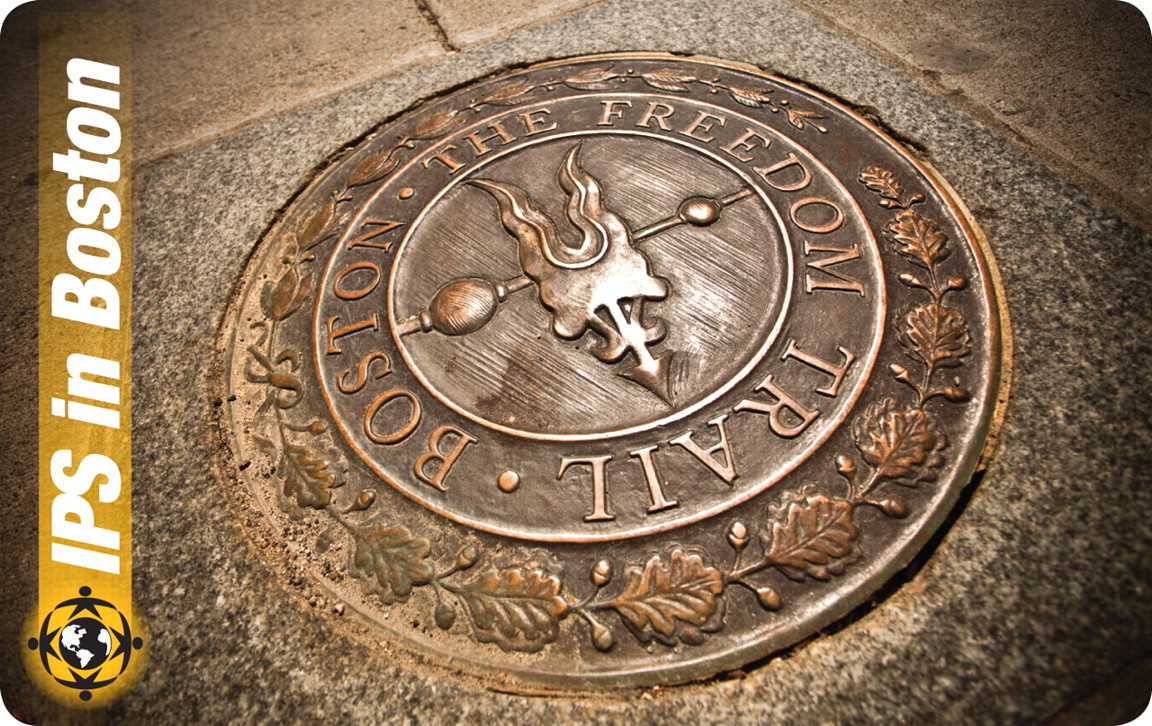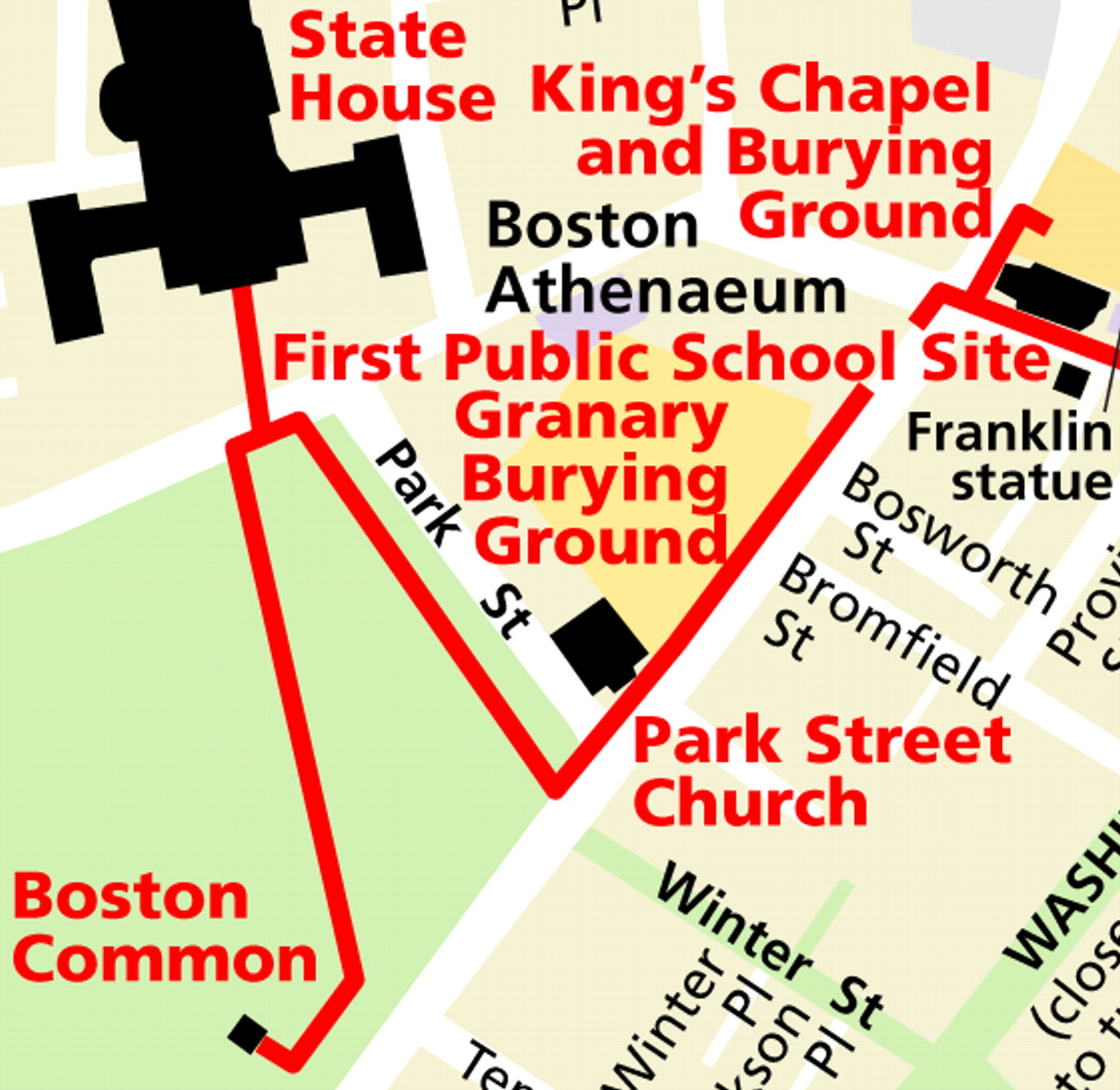Boston's Freedom Trail Makes Time Travel Easy
Abstract
Boston is known as the cradle of the revolution, so history buffs attending this year's Institute on Psychiatric Services will be spoiled for choice when it comes to colonial and Revolutionary War landmarks to see.
A great way to get the full flavor of Revolutionary Boston is the city's famed Freedom Trail, a mostly red-bricked trail covering two-and-a-half miles of the city.

Last chance to register for APA's Institute on Psychiatric Services and save on fees! Advance registration for the institute, which is being held October 14 to 17 in Boston, closes on September 24. You don't want to miss this meeting—last year's attendance was the highest ever and earned rave reviews. To register, go to <www.psych.org/ips>.
Boston's official Freedom Trail Web site notes that red brick or—in some cases—a painted red line connects the sites for those who want to go it on their own.
“Since the past and the present live alongside the trail, its visitors have the opportunity to see the city as it truly is,” according to the city's Web site. “Many visitors prefer to linger and study the many exhibits, thus a full day or more can be devoted to browsing along the trail.

Freedom Trail map is posted at <http://www. thefreedomtrail.org/maps/pdfs/boston-nps-map.pdf>.
“One can take a self-guided tour or one of the many tours available through the Boston Common Visitors Center at 148 Tremont Street or the Bostix Booth located at Faneuil Hall. If you prefer to ride, you can pay for one of the trolley tours, which are unofficial guided tours, but do take the rider to many of the sites along the trail and allow one to disembark at selected stops.”
Following is a description of the trail and its major landmarks, keyed to the accompanying map.
| 1. | Your journey begins at the Boston Common, one of the oldest public parks in America. This is the site from which British forces launched their April 1775 assault on Lexington and Concord. | ||||
| 2. | Next stop and visible from the Common is the gold-domed Massachusetts State House which has served as the seat of government since 1798. The building is located on property once owned by the first elected governor of Massachusetts and Declaration of Independence signer John Hancock. | ||||
| 3. | Travelling back to Park Street, you'll come to the Park Street Church and Granary Burying Ground. This 1660 cemetery is the oldest in Boston proper. Look for the burial sites for famous revolutionaries such as John Hancock, Samuel Adams, and Paul Revere. | ||||
| 4. | Walking up Park Street your next stop is the King's Chapel and Burying Ground. Buried here are several notable figures in colonial America—Mary Chilton, the first woman to disembark from the Mayflower; John Winthrop, the Massachusetts Colony's first governor (1629); and Elizabeth Paine, believed to be the model for Nathaniel Hawthorne's character Hester Prynne are all buried here. | ||||
| 5. | Just across from the burying ground, on School Street, are the Benjamin Franklin statue and the first public school site. Across from the statue of the famous American statesman is the location where, in 1635, Puritan colonists established the first American public school where such famous students as Samuel Adams, John Hancock, and Benjamin Franklin once studied. | ||||
| 6. | A quick jog down Washington Street is the Old South Meeting House, built in 1729 as a Puritan place of worship. The original location of the Boston Tea Party meetings, today it houses a museum where students can view dramatizations of taxation debates. | ||||
| 7. | Back up Washington Street in the opposite direction is the former Old Corner Bookstore, now the Boston Globe Store, one of the oldest surviving buildings in Boston. Originally an apothecary, the gambrel-roofed structure was also the home of the Ticknor and Fields Company, publishers of 19th-century literary greats Nathaniel Hawthorne, Louisa May Alcott, Ralph Waldo Emerson, and others. | ||||
| 8. | Farther on Washington Street and after a turn to the right over to Devonshire Street is the Old State House, former trade and government location and site of the March 5, 1770, Boston Massacre. | ||||
| 9. | Next on the stop is Faneuil Hall, the site of multiple meetings in protest of British taxation of the colonies and now a favorite Boston shopping site. | ||||
| 10. | At this point, you will want to follow signs for the Freedom Trail as you travel into Boston's North End. There you will find two notable monuments to Paul Revere—the Paul Revere House and, farther on, the Old North Church where Sexton Robert Newman warned Paul Revere and other patriots of the advance of British troops. The Georgian-style church also houses the first known bust of George Washington. | ||||
| 11. | Proceeding on toward the Charles River, history and literature scholars both will appreciate seeing the gravestone of Cotton Mather at the Copp's Hill Burying Ground. This 1660s site was also the location of the British cannon that first fired on American soldiers during the Revolutionary War battle on Breed's Hill. | ||||
| 12. | After crossing the river via the Charlestown Bridge, you can follow Constitution Road past the Visitors Center to the docks where the USS Constitution and Museum are located. The Constitution, memorialized in Longfellow's poem “Old Ironsides,” is the oldest commissioned warship in the world. | ||||
| 13. | Walking back down Constitution to Adams Street, turn right and follow signs to the Bunker Hill Monument, the last stop on the Freedom Trail. The monument memorializes the June 17, 1775, fighting at Breed's and Bunker Hills and American sacrifices at the first major skirmish of the Revolution. | ||||
Information on the Freedom Trail is posted at <http://www.cityofboston.gov/freedomtrail/>.



